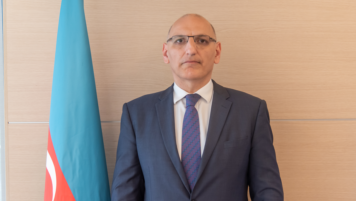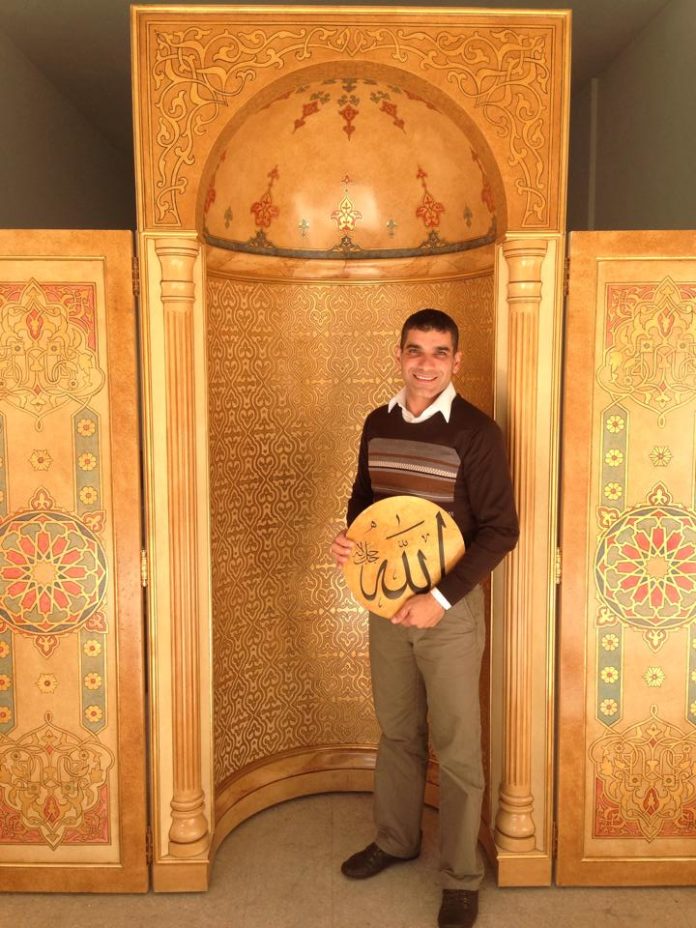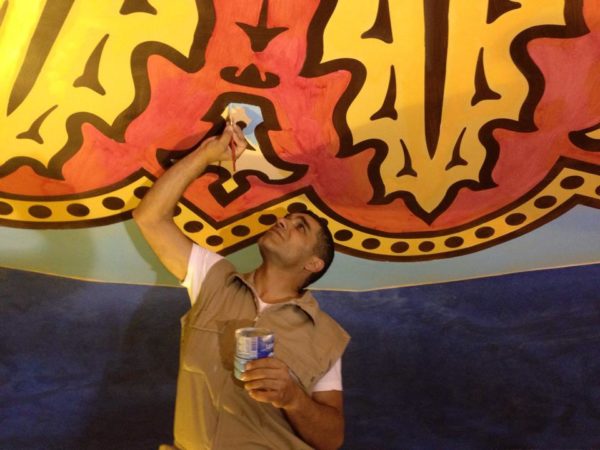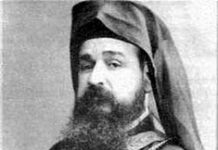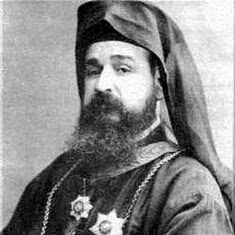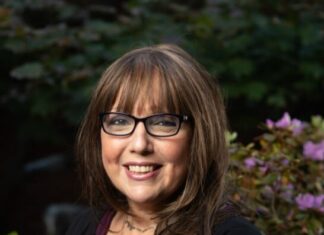YEREVAN / KESERWAN (Lebanon) — Haroutioun Isack Bastajian, 47, studied at the Armenian Evangelical High School, Ashrafieh, Beirut, from kindergarten to graduation. Later he studied technical science in interior design at International Institute in Jounieh, Keserwan, as well interior design at Notre Dame University in Zouk, Keserwan and Islamic Art at Lebanese American University in Beirut. After working at Raffi Institute (with sculptor Raffi Tokatlian) in the field of decorative art works, in 1996 he founded The Art of Mosques establishment, being its president, executor, and artist, dealing with the decoration of houses, villas, palaces and mosques. Harout himself makes the decorative painting and ornamentation (gilding, calligraphy, patina, stone and wood imitations). He lives in Mount Lebanon, married to Alina Novikova and has three daughters and three sons.
Dear Harout, in Beirut — one of my favorite places, which I have visited three times and wish to visit again and again — I have visited the Mohammad al-Amin mosque, a very remarkable building. At that time, I did not know that it was commissioned by our compatriot.
The Mohammed al Amine mosque is a landmark in the center of Beirut, since its construction in 2005; it changed the picture of Beirut standing beside the St. George Cathedral; it became the true picture of coexistence of religions in Lebanon. As an Armenian whenever I find a compatriot who has achieved in any success, I feel moved and proud and I am sure this is the exact feeling most of us Armenians have all around the globe.
And also I am sure it should be something unusual that a non-Muslim person works for this very typical Islamic art. How religious people react on it?
I love my career. I work as an artist to provide the best I can and that is always my main concern and dedication; frankly not only in Lebanon where religions coexist, but anywhere outside Lebanon I have never ever had a problem with my religion. When asked how come a Christian is decorating Muslim mosques, my sincere answer will be: “God works in mysterious ways, bringing us together to contribute to His house of worship.”
